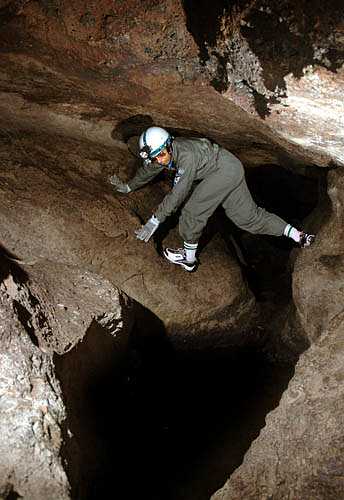 |
ZOTZ TRIP REPORTS
JALISCO CAVES 2005
El Carro Cave
October 22, 2005. While on a mission to find “expensive, isolated haciendas” for a wealthy Saudi whose name shall not be mentioned, we visited a rancho near Nextipac. There we chatted with two boys named Raul and Oscar who told us about cave entrances on a nearby hill known as Cerro El Carro (Car Hill).
First, the boys showed us several depressions that were once holes but are now “filled in.” Most of these lie in a straight line which points towards the western branch of Qanat La Venta. However, the rocky nature of the hillside precluded any likelihood of an underlying man-made aqueduct.
The last depression, however, was, in fact, a cave entrance. We crawled down into a space among huge rocks and followed a crawlway which led to a large, totally dark room. At the far end of this room we found a low crawl leading to a high, but narrow fissure. This went off left and right, so it looked like we had two good leads to more cave.
A few weeks later we returned to Carro Cave with Chris, Sonia, Alberto and Victor. Mapping the cave to the fissure took only a few minutes. Then, alas and alack, we discovered that further progress was very difficult off to the right and downright dangerous to the left, where you could upclimb to a higher level but above you were hundreds of rocks precariously piled one upon the other and looking like they would all descend if anybody sneezed.
Chapuzon Revisited
Chapuzon or Cold Dunk Cave is the only "river cave" located near Guadalajara. The river may not be very big, but it is cold and it is wet! You can read about our first misadventures in Chapuzon and our final conquest and mapping of the cave, at our Subterráneo website. In April, 2005, Pedro Fernández somellera and John Pint visited Chapuzon Cave to get the GPS coordinates for the tree-root entrance. A few weeks later, Jan Paul Vanderpas, visiting from the Netherlands, and John Pint (Zotz) took a “sonic” (not laser) distance-measuring device into Chapuzon Cave where they proved that such a device is utterly useless in a cave (unlike the Disto laser measurer, which was successfully used for dozens of cave surveys in Saudi Arabia). The "Strait-Line Sonic Laser tape” is deceptively misnamed, as its laser is only for pointing while the measurement is made by sound waves. The gizmo worked fine in a house, using a clipboard for the flat surface needed. However, in Chapuzon the same clipboard didn’t help a bit. The problem may be the echo or humidity of the cave or something else we have completely missed.
| We hope to take more pictures in Chapuzon Cave and to
feature it at the International Lava-Cave Symposium this coming July.
|
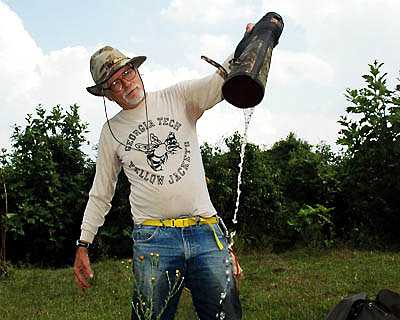 |
Tequilizinta: Truly a Lava Cave
On December 20, 2005, Pedro Fernández Somellera, Sergi Gómez, John Pint and the entire Mohl clan headed for Cuata or Tequilizinta Cave with the aim of determining whether it is or is not a true lava tube. This cave, which is described in Subterráneo #6, is in a cliffside overlooking the Santiago River and was believed (by members of a possibly now defunct religious sect) to be one of seven places that will be spared when Doomsday comes. It also features one of the muddiest and stickiest rooms we've ever seen.
|
...Crawling to the cave’s
delightful pool of vampire guano and water, we spotted small lava
stalactites on the ceiling, which seem to prove that this is a genuine lava
tube.
|
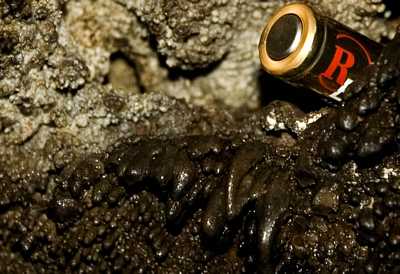 |
Unfortunately, we did not have time to check out the state of the “ghost town” atop Tequilizinta Bluff. A subsequent trip by John and Susy Pint and Sonia Calvillo, convinced us that this elusive settlement is not exactly where John thought it would be, meaning the place is now more ghostly than ever.
|
|
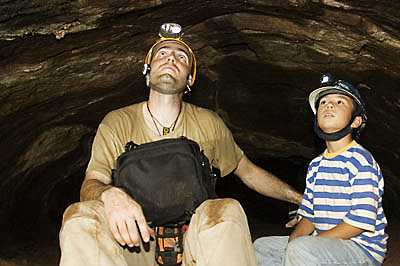 |
Chiquihuitón Cave: The impossible Climb and the Impassable passage
On Dec 4, 2005, Pedro and Celina Fernández Somellera joined Susy and me in an attempt to reach Chiquihuiton Fissure Cave. We drove to La Toma Valley, just past Tequila and had a nice chat with the owner of La Toma Swimming Pool.
|
|
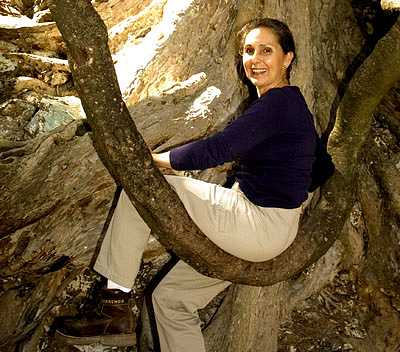 |
Later, I returned with Sergi and Sonia. We followed a nice path about 250 m north through an agave field sprinkled with big black volcanic rocks. The sharp needles normally found at the tips of the agave “leaves” had been thoughtfully trimmed, resulting in a pleasant—instead of excruciatingly painful—hike. But then we arrived at the bottom of the extremely steep slope, which must be climbed to get to the cave. At this point, the path vanished completely. “Well,” we said, “if we just head uphill, we are bound to intersect the old path…how could we miss it?”
Well, this all-too-close-to-90° slope is covered with a thick tangle of trees, weeds, thorns and cacti which we slowly penetrated, groping for skinny papelito trees and pulling ourselves upward. Halfway up what seemed more and more like a wall rather than a slope, we came to the conclusion we were never going to cross that infamous path and we had no choice but to keep inching our way upwards, sweating and cursing until we finally reached the top, where I flopped down on my back, like a fish out of water, huffing and puffing for dear life.
|
|
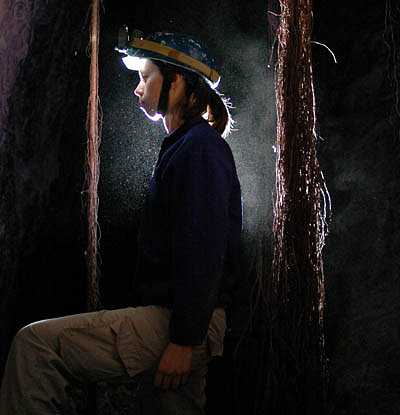 |
Of course, on the way down, we found our mislaid path. As we descended “decently” we could appreciate the stupendous view from the ridge. We could see blue agave fields, bonete trees with their green, bomb-shaped fruits and across the valley, shooting out of a hole in the opposite wall of the canyon, we could see a mighty waterfall. Here is a really challenging cave which has not yet been explored… Andale, Sergi!
John Pint